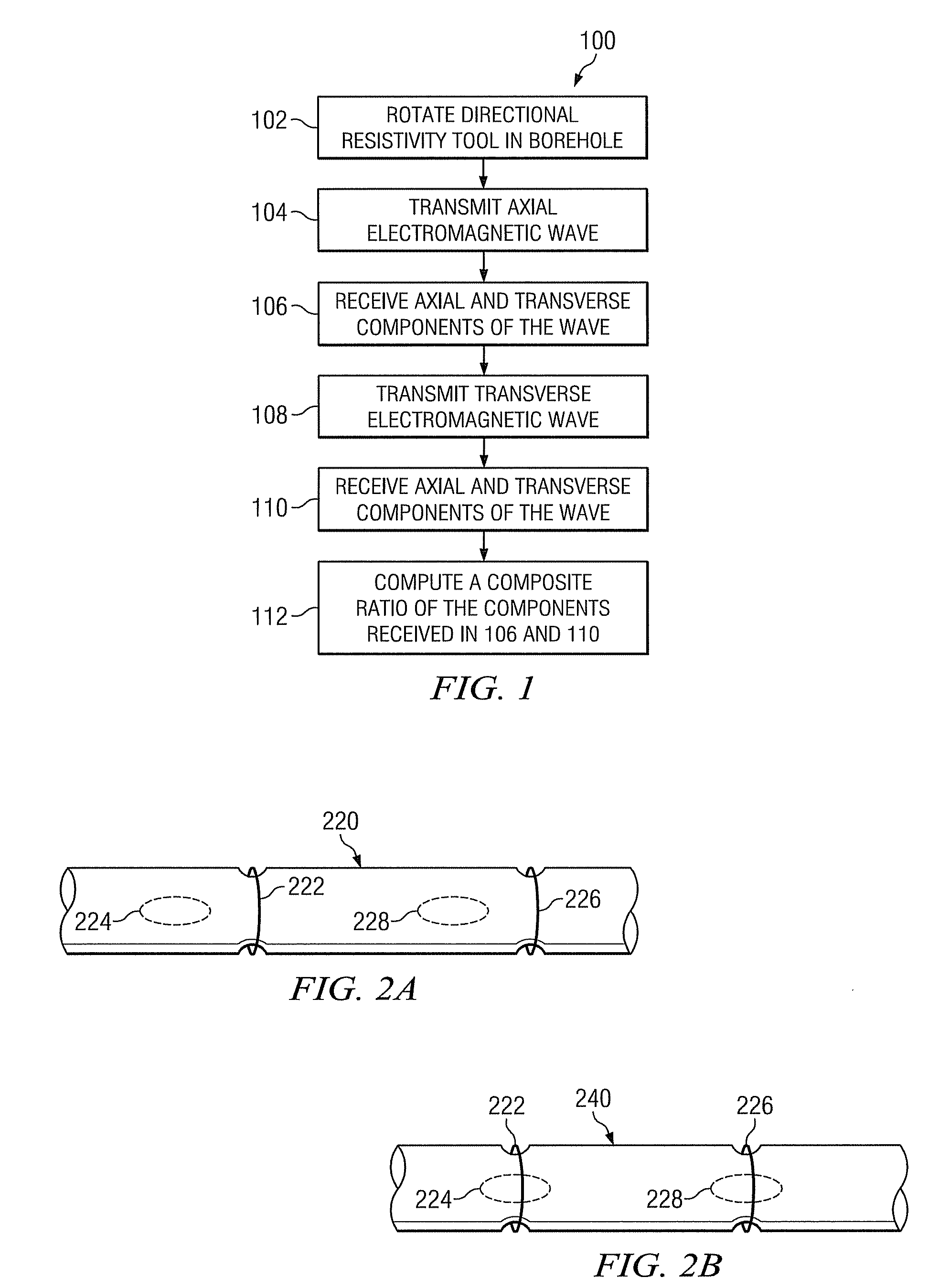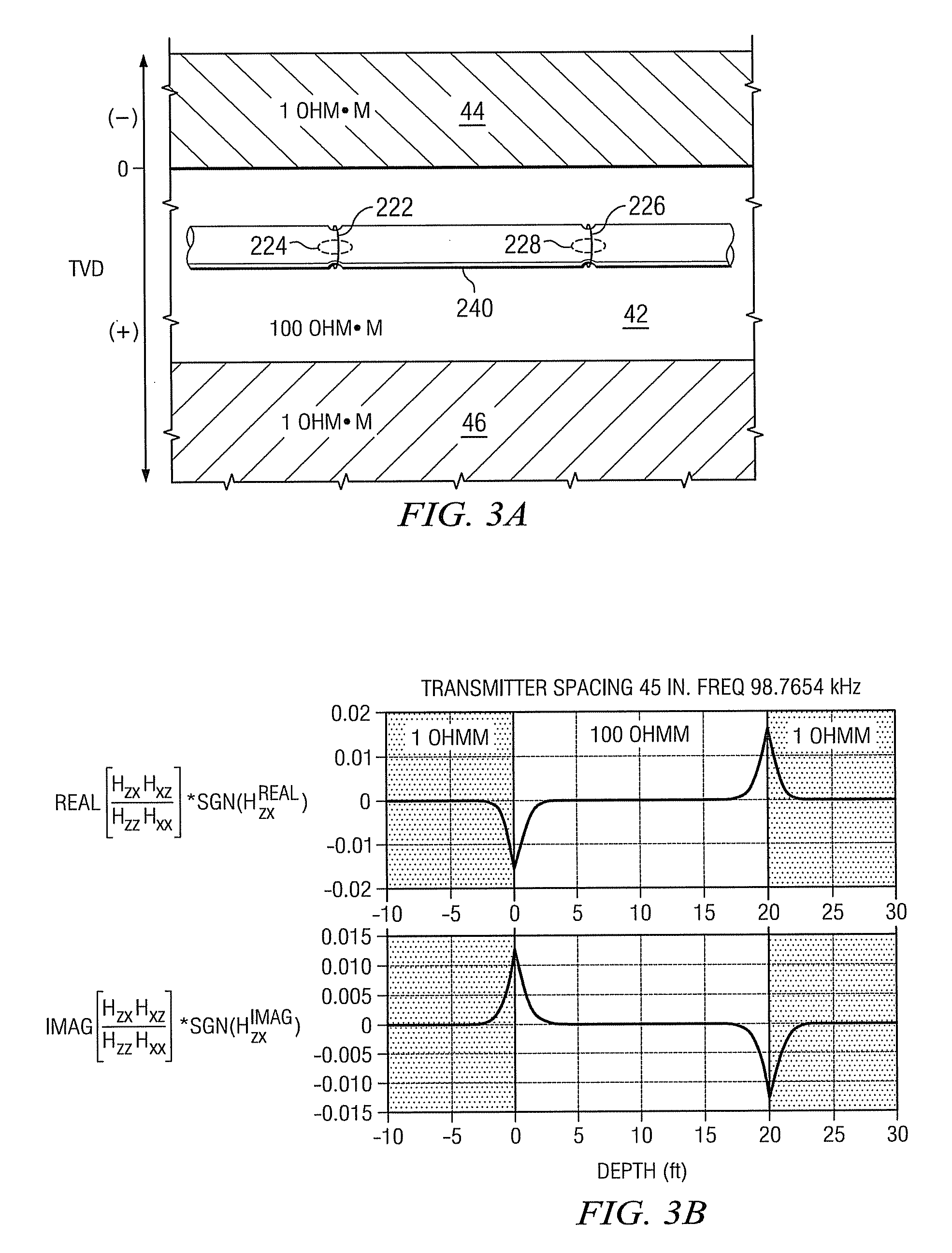Compensated directional resistivity measurements
- Summary
- Abstract
- Description
- Claims
- Application Information
AI Technical Summary
Benefits of technology
Problems solved by technology
Method used
Image
Examples
embodiment 100
[0023]With reference to FIG. 1, exemplary method embodiment 100 in accordance with the present invention is depicted in flowchart form. In the exemplary embodiment depicted, a directional resistivity tool is rotated in a borehole at 102. As described in more detail below, the resistivity tool includes at least first and second transmitting antennae, one of which is configured to transmit substantially pure z-mode electromagnetic waves and the other of which is configured to transmit substantially pure x-mode electromagnetic waves. The tool further includes at least first and second receiving antennae longitudinally spaced from the transmitting antennae. One of the receiving antennae is configured to receive a substantially pure z-mode component of an electromagnetic wave and another is configured to receive a substantially pure x-mode component of an electromagnetic wave. The transmitting antennae may be fired (energized) sequentially (in either order) at 104 and 108, thereby transm...
embodiment 240
[0027]FIGS. 2A and 2B (collectively FIG. 2) depict exemplary EM directional resistivity tools 220 and 240 suitable for use with certain method embodiments in accordance with the present invention. Resistivity tool 220 (FIG. 2A) includes at least one axial transmitting antennae 222 and at least one transverse transmitting antenna 224 deployed on the tool body. The resistivity tool 220 further includes at least one axial receiving antenna 226 and at least one transverse receiving antenna 228 deployed on the tool body. In the exemplary embodiment depicted on FIG. 2A, each of the transmitting antennae 222 and 224 and the receiving antennae 226 and 228 are longitudinally spaced on the tool body. The transmitting antennae and the receiving antennae may also be collocated, for example, as depicted on FIG. 2B for tool embodiment 240. In FIG. 2B, the transmitting antennae are collocated and the receiving antennae are collocated. The invention is not limited in this regard. The transmitting a...
PUM
 Login to View More
Login to View More Abstract
Description
Claims
Application Information
 Login to View More
Login to View More - R&D
- Intellectual Property
- Life Sciences
- Materials
- Tech Scout
- Unparalleled Data Quality
- Higher Quality Content
- 60% Fewer Hallucinations
Browse by: Latest US Patents, China's latest patents, Technical Efficacy Thesaurus, Application Domain, Technology Topic, Popular Technical Reports.
© 2025 PatSnap. All rights reserved.Legal|Privacy policy|Modern Slavery Act Transparency Statement|Sitemap|About US| Contact US: help@patsnap.com



